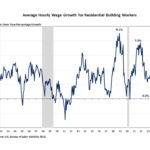If it sounds too good to be true, it probably is. That was likely your reaction when you read this headline.
However, loan modifications are not a relic from a bygone era but have surged in recent months due to the number of mortgages that have become unsustainable, with rates as low as 2% touted. Here’s what you need to know to see if your investment property qualifies.
What Are Mortgage Loan Modifications?
According to commercial mortgage analytic company Creed iQ, loan modifications are set to skyrocket in 2024, surpassing the record set in 2023. A loan modification can often include:
- Lowering the interest rate.
- Extending the loan period.
- Forbearing or reducing your principal balance.
- Various combinations of these.
Approximately $22 billion in loans were modified in the past 12 months ending May 31, with over $9 billion in loans modified in 2024 through May. The average CRE loan modification volume per month has been $1.8 billion.
While the loan modification data quoted by Creed iQ concerned large commercial buildings, such as high-rise office buildings or sprawling complexes, smaller residential assets are also eligible for modifications.
Types of Loan Modification Programs
The Flex Modification program is one of the most common for homeowners and investors with conventional mortgages owned by Fannie Mae or Freddie Mac. For investors, the mortgage must be 90 days or more past due. Your lender must determine that your loan is in imminent danger of default, even if it’s current or you haven’t yet surpassed the 90-day delinquent mark.
The Flex Modification program is an offshoot of the HAMP program (Fannie Mae Home Affordable Modification Program), which you may remember from the 2008 financial crash. According to the Fannie Mae website, the Flex Modification leverages components of HAMP, the Fannie Mae Standard, and Streamlined Modifications.
Highlights include:
- The program can be applied to all mortgages (including commercial and those used on investment properties) per the Servicing Guide.
- The program requires a complete loss mitigation application for borrowers less than 90 days delinquent and targets a 20% payment reduction and a 40% housing expense-to-income ratio.
- The program targets a 20% payment reduction for borrowers who are 90 days or more delinquent and requires no borrower documentation.
Enhancements to the Program Make It Easier to Qualify
In May 2024, the Federal Housing Finance Agency (FHFA) announced enhancements to the Flex Modification Program, including principal and interest rate reduction by 20%. It also offers mortgage term extensions (up to 480 months) and principal forbearance.
However, simply applying if you are late on your mortgage probably won’t be enough to qualify. An owner will have to clearly display difficulties in meeting their mortgage payment, which, aside from personal reasons (like divorce or loss of income), can also include housing costs that are outside your control—which could potentially include higher mortgage rates, taxes, insurance, etc.
Applying for a Flex Modification
The program terms stipulate that lenders and mortgage servicers must reach out to borrowers who are 30 days or more delinquent on their home loans. However, even if you are not yet 30 days late, you can contact a lender or servicer to initiate an application known as a Borrower Response Package. It includes the following documentation:
- Borrower Assistance Form.
- Request for Individual Tax Return Transcript.
- Proof of financial hardship.
- Proof of income.
You don’t have to complete these forms if you are 90 days or more behind on the mortgage. You’re eligible for a streamlined Flex Modification, which doesn’t require proof of income.
Multiple Loan Modification Programs Are Available
According to Modification Center, a company specializing in loan modifications, the Flex Modification is just one type of modification program available to homeowners and investors. Their website lists 15 different types of modifications, and it cites major banks such as Chase, Wells Fargo, and Bank of America as those they have modified loans for.
A representative from Modification Center told BiggerPockets:
“Banks don’t want you to modify your mortgage and lower your rate because they won’t make as much money, so they are not likely to give you the lowest rate if you deal with them directly. It’s not an easy process. A borrower might initially face calls from the servicing department before the service rep knows the modification is in process.”
“The borrower is on one side, and the bank is on the other, and the only way to make banks take notice is to be behind 90 days on payments. It can be nerve-wracking for clients. I hear it in their voices.”
A Borrower’s Credit Could Take a Hit
In these instances, Modification Center collects the payments in an escrow account, which is later applied to the mortgage once a modification has been agreed upon. Naturally, giving mortgage payments to a third party is a cause for concern for those looking to modify their loan. However, the company insists that their loan modifications are legitimate and adhere to government programs.
To put potential clients’ minds at rest, Modification Center does not charge an upfront fee, but gets paid once the modification is complete. There is a possible hit on a borrower’s credit (depending on the entity the mortgage is held under) after missing payments, which Modification Center says will be shown as being current once the modification is completed and will rise over time with regular payments.
Final Thoughts
Clearly, as evidenced by the volume of mortgages in the commercial sector, loan modifications are a proven tool to fight the rapid increase in interest rates we have seen since the pandemic. For owners of these large properties, the decision to modify their loan is likely a relatively easy one. It could mean the difference between staying in business and not.
For smaller investors, the decision could be more fraught. There is a big issue of trust. Will the bank agree to modify your loan? Will your escrow money be safe if you use a third party to handle the modification? How badly will your credit be affected? Could you lose your investment if the bank forecloses?
Investors must ask these questions, see testimonials, and speak to previous clients before deciding. The lure of a 2% or 3% interest rate makes a loan modification very hard to resist.
Ready to succeed in real estate investing? Create a free BiggerPockets account to learn about investment strategies; ask questions and get answers from our community of +2 million members; connect with investor-friendly agents; and so much more.
Note By BiggerPockets: These are opinions written by the author and do not necessarily represent the opinions of BiggerPockets.




